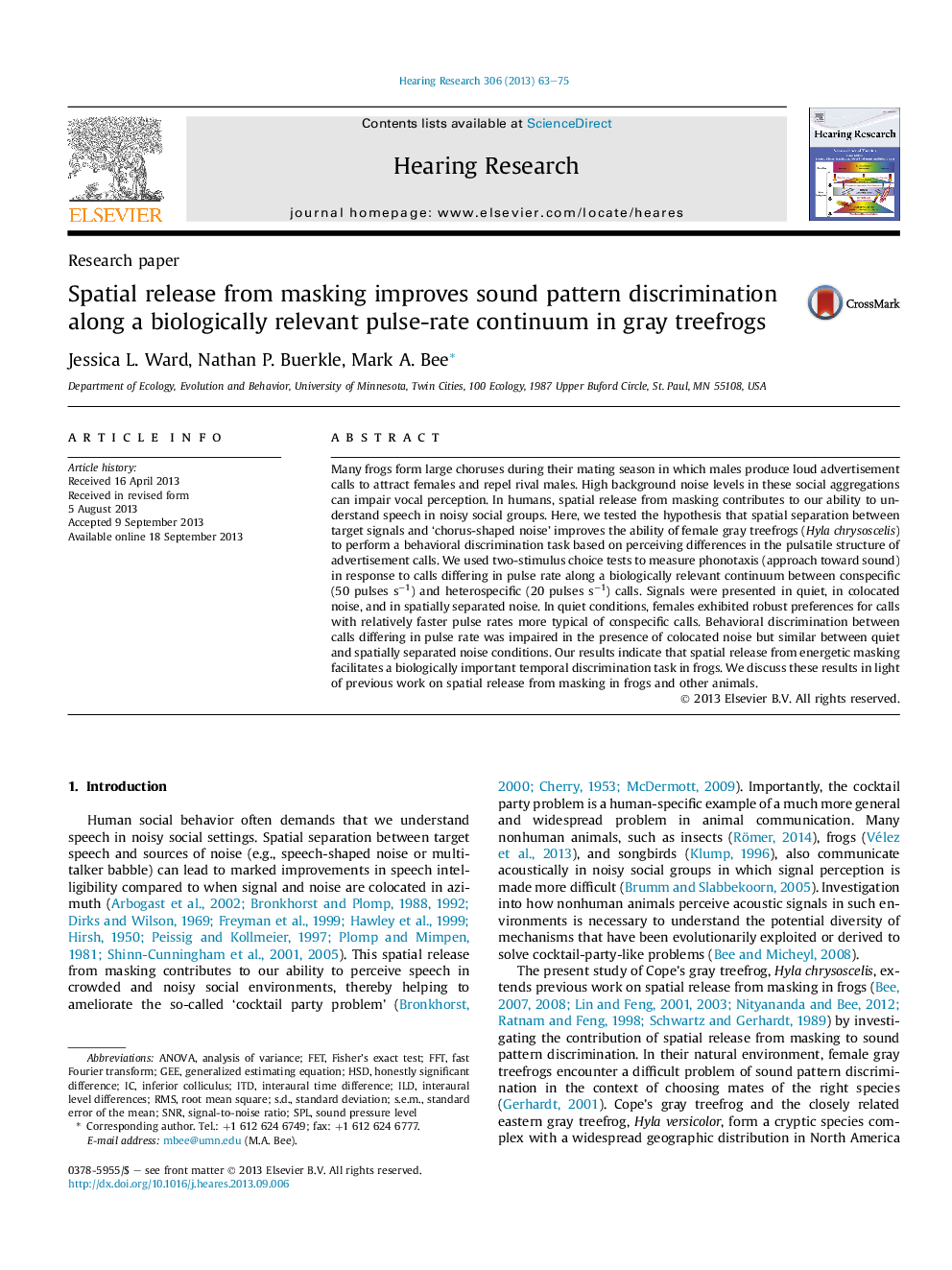| Article ID | Journal | Published Year | Pages | File Type |
|---|---|---|---|---|
| 4355163 | Hearing Research | 2013 | 13 Pages |
•Frogs must solve a cocktail-party-like problem to breed in noisy choruses.•Choosing an appropriate mate requires discriminating among call properties.•We investigated spatial release from masking in a temporal discrimination task.•Spatial separation between signals and noise improved temporal discrimination.•Like humans, frogs exploit spatial separation between signals and noise.
Many frogs form large choruses during their mating season in which males produce loud advertisement calls to attract females and repel rival males. High background noise levels in these social aggregations can impair vocal perception. In humans, spatial release from masking contributes to our ability to understand speech in noisy social groups. Here, we tested the hypothesis that spatial separation between target signals and ‘chorus-shaped noise’ improves the ability of female gray treefrogs (Hyla chrysoscelis) to perform a behavioral discrimination task based on perceiving differences in the pulsatile structure of advertisement calls. We used two-stimulus choice tests to measure phonotaxis (approach toward sound) in response to calls differing in pulse rate along a biologically relevant continuum between conspecific (50 pulses s−1) and heterospecific (20 pulses s−1) calls. Signals were presented in quiet, in colocated noise, and in spatially separated noise. In quiet conditions, females exhibited robust preferences for calls with relatively faster pulse rates more typical of conspecific calls. Behavioral discrimination between calls differing in pulse rate was impaired in the presence of colocated noise but similar between quiet and spatially separated noise conditions. Our results indicate that spatial release from energetic masking facilitates a biologically important temporal discrimination task in frogs. We discuss these results in light of previous work on spatial release from masking in frogs and other animals.
